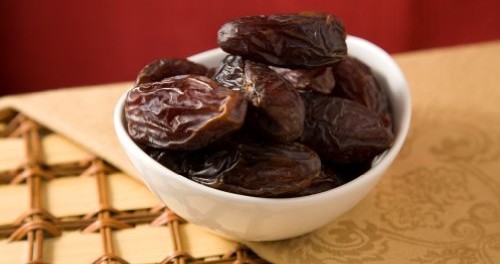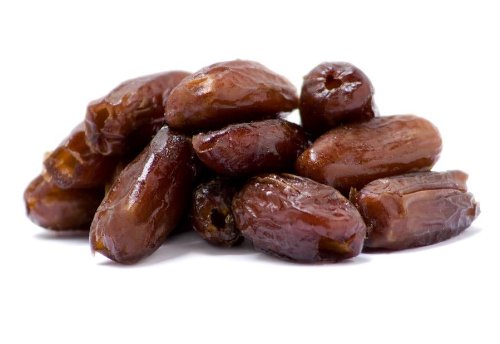Yes Our Forefathers Knew Importance of Dates Fruit

Origin of date palm tree
The exact origin of the date palm tree is lost in Antiquity. However, there is reference of construction of the temple of the moon god near Ur in Southern Iraq Mesopotamia that the date palm was cultivated as early as 4000 B.C.
Geographical distribution of date palm
The extreme limits of the dates palm distribution in the world are between 10°N (Somalia) and 39°N (Elche/Spain or Turkmenistan). Favorable areas are located between 24° and 34°N (Morocco, Algeria, Tunisia, Libya, Israel, Egypt, Iraq, Iran, etc.). In USA, date palm is found between 33° and 35°N. Because of climatic factors, the date palm will grow but will not fruit properly outside the above-defined geographical limits.
Date palms are unique in nature that they are either a male tree or a female tree. The male trees produce pollen, and the female trees produce flowers. Unfortunately, neither birds or bees are attracted to the flowers, so the females have to be hand pollinated. The date trees cannot tolerate the rain or humidity. There is a wide variety of dates including the better known Medjool and Deglet Noor. Each variety is unique in size, sweetness, flavor and texture.
What is in the dates?
Dates have nutritional value, laxative power, exoticism, originality and a source of energy that is in the form of invert sugars. It provides a wide range of essential nutrients and potential health benefits.
How date palm help in ecology?
Date palm is an irreplaceable tree in irrigable desert lands. It provides protection to under-crops from the harshness of the climate (heat, the wind and even cold weather). It reduces damage caused by sandstorms and wind erosion. Furthermore, with the micro climate created by date palm plantations, the cultivation of some fruit palms and annual crops will be possible.
Reference of date palm in archaeological research and religious books
According to the archaeological research, ancient historical remains of the Sumerians, Akkadians and Babylonians houses of very ancient people were roofed with palm tree trunks and fronds. The uses of date for medicinal purposes, in addition to its food value, were also documented.
The Jews consider the date as one of the seven holy fruits, and they celebrate Palm Sunday. Hebrew word for the date palm is “Tamar”. During First Century A.D, it became the Jewish symbol of grace and elegance and was often bestowed by them on women.
The legend is, that the date palm (not the apple tree) was the tree of knowledge of good and evil, and that the date (not the apple) was the fruit Eve so generously offered to Adam in the Garden of Eden. If the date palm tree was the tree of knowledge, Gabriel would not have suggested to Adam that he taste and eat the dates.
The Quran has reference of Mary eating dates in labor.
In India, China, ancient Greece, medieval Europe, and other civilizations food are inextricably linked to spiritual and physical health. “You are what you eat”.
Modern medicine and research about impact of eating dates during pregnancy
Jordan University of Science and Technology conducted study on pregnant women to find out the impact of consumption of six-date fruits per day for 4 weeks prior to their estimated date of delivery. They found that the reduction of the need for induction and augmentation of labor, and produced a more favourable, but non-significant delivery outcome. However, some significant findings are:
- Cervical dilation was greater in the date-eating mothers
- 83% of mothers who consumed dates had their membranes intact
- 96% of women who ate dates went into labor on their own
- Use of Pitocin (synthetic Oxytocin) was lower in women who consumed dates
- The latent phase of the first stage of labor was almost 7 hours shorter in the date-eating mothers.
Khadem et al. (2007), in a study comparing the effects of date fruit and oxytocin in the prevention of postpartum hemorrhage, found that date fruit has an oxytocin-like effect. It leads to the increased sensitivity of the uterus, stimulates uterine contractions and reduces mean postpartum hemorrhage. The study confirms that consumption of oral dates after delivery decreases bleeding more than intramuscular oxytocin, and it is a good alternative in normal delivery.
Rahmani Bilandi et al. (2009) found consumption of carbohydrate foodstuffs (three dates) during delivery, in addition to preventing severe vomiting, shortens the second stage of delivery during the random trial.
Kordi M et al. (2010), found in a study of the effect of oral honey-date syrup intake during labor on progress of nulliparous women that the consuming honey-date syrup may accelerate natural procedure of delivery. Drinking this syrup during delivery may prevent long delivery. (Nulliparous is the medical term for a woman who has never given birth to a viable, or live, infant.)
Conclusion
Eating the healthy, and inexpensive food can save mother and newborn child’s lives, reduce the external medical intervention. It also saves the healthcare cost.
References:
http://www.fao.org/docrep/006/y4360e/y4360e06.htm
http://www.dateland.com/how-are-dates-grown/
https://www.organicfacts.net/health-benefits/fruit/health-benefits-of-dates.html
http://www.ncbi.nlm.nih.gov/pubmed/12850886
http://jmrh.mums.ac.ir/article_2772_0.html
http://emedicalj.com/?page=article&article_id=20645
http://en.journals.sid.ir/ViewPaper.aspx?ID=161253
http://en.journals.sid.ir/ViewPaper.aspx?ID=172501
To purchase dates online click here.




